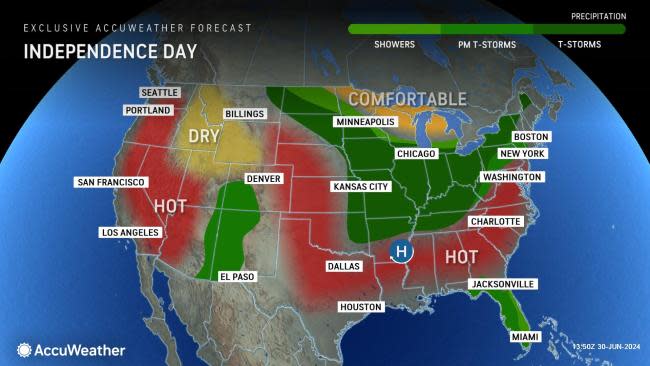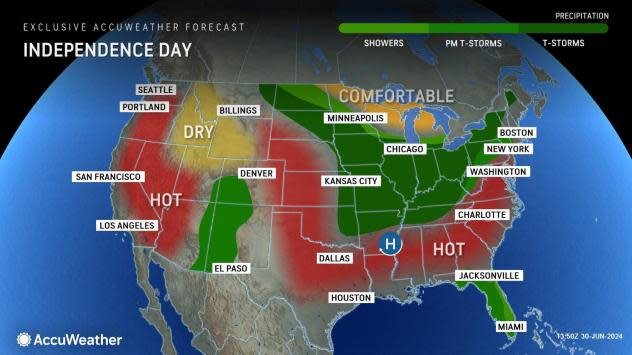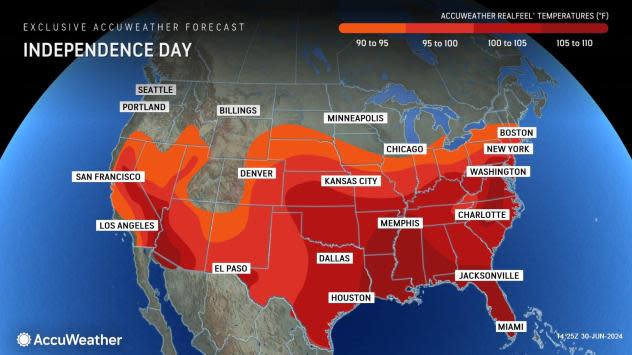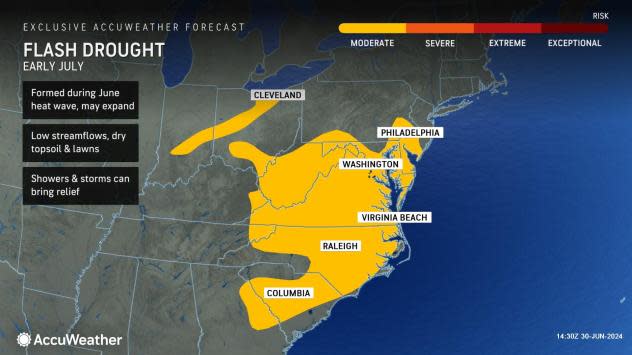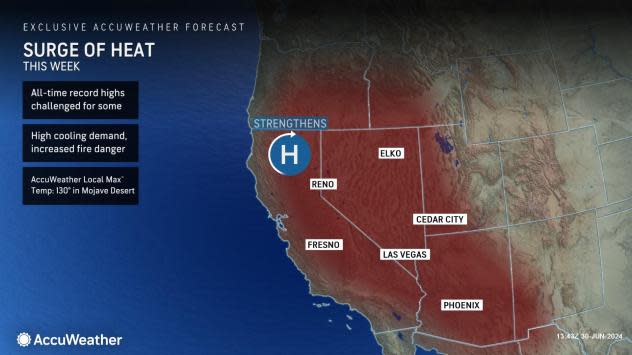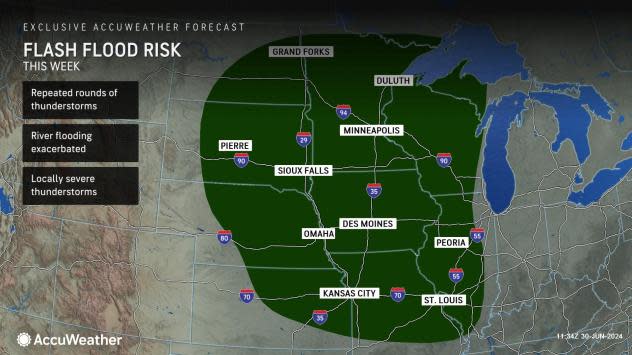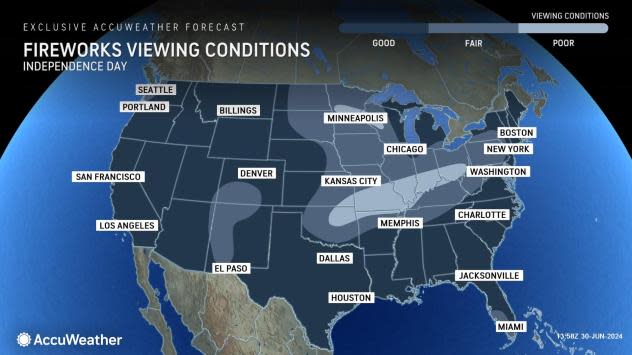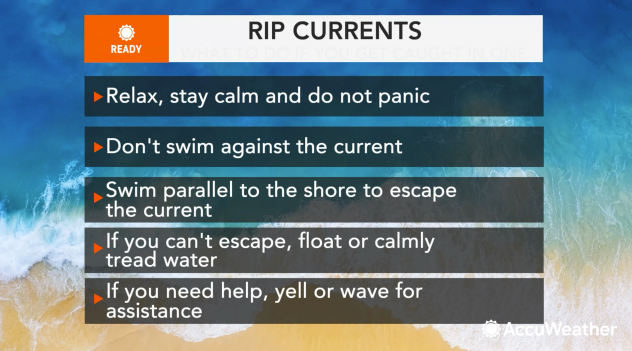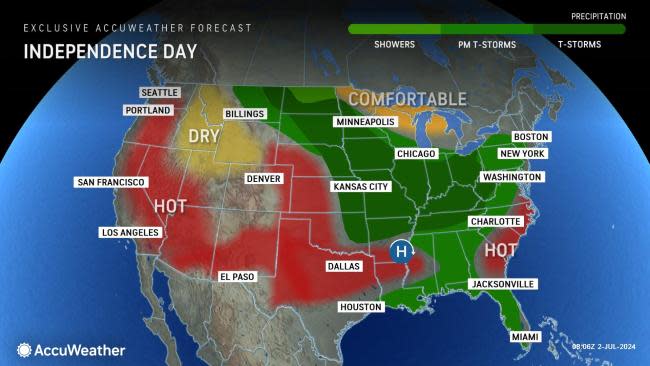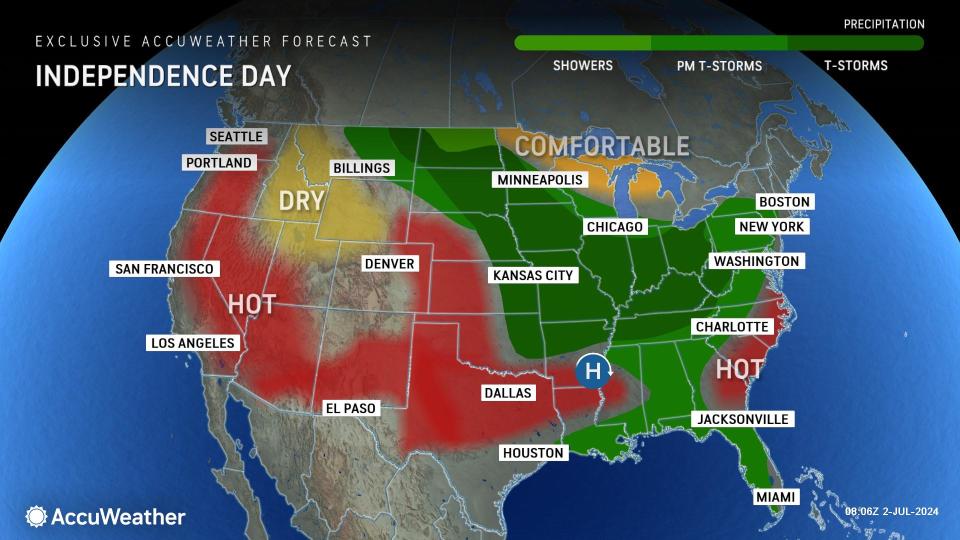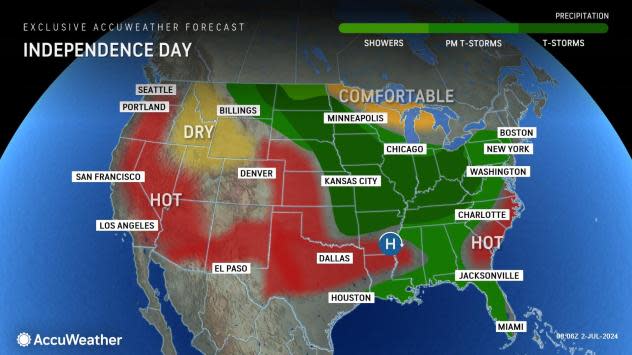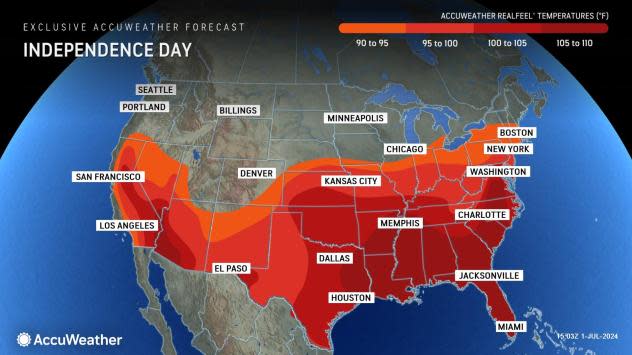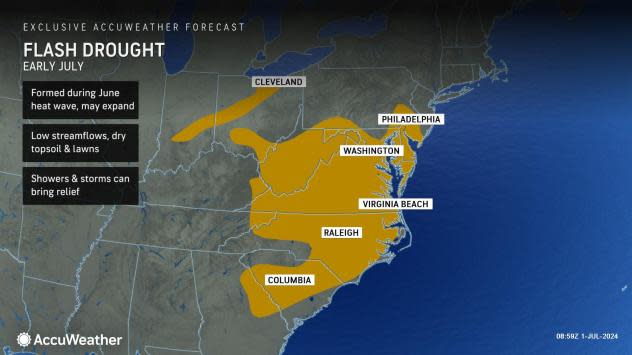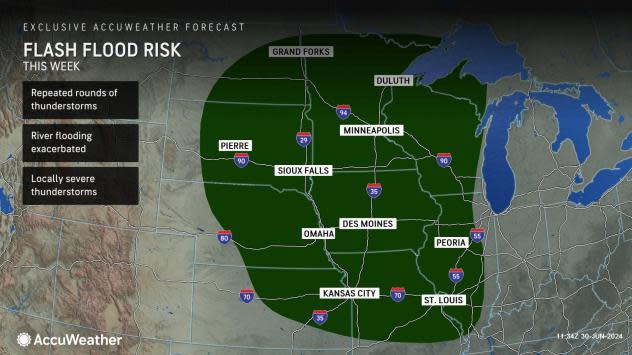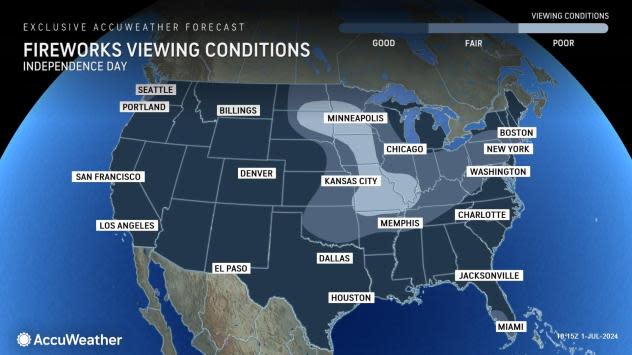Storms for some, hot as a firecracker for others on the Fourth of July
The Fourth of July will be hot for many areas of the United States, which is no surprise. In much of the nation, temperatures reach the peak historical average in July. While many can expect very warm air for July, temperatures may reach record levels in some locations. AccuWeather meteorologists say that this will especially be the case in the West, particularly in California.
 |
"It's going to be downright hot across the Southwest, especially in California and the Desert Southwest where record highs will be challenged," said AccuWeather Senior Meteorologist Joseph Bauer.
"A heat dome building across the West will keep things dry and hot for the Fourth of July in many places, and even normally cooler places along the coast will be on the warm side," said AccuWeather Senior Meteorologist Brian Thompson.
 |
Heat will continue to ramp up early this week in California and will intensify through the Fourth of July holiday. While the interior valleys of California will have the most extreme heat, there will be few places across the region to escape.
While California will have record-challenging heat, temperatures are also expected to exceed the historical average across much of the southern Plains and the Southeast. Even where temperatures fall short of records, highs that are even just a few degrees above the historical average can be rather dangerous during the hottest time of the year.
Farther north and east, the first few days of July will feature a break from the recent heat and humidity in the mid-Atlantic and Northeast. By the Independence Day holiday, however, the heat and humidity will surge northward once again.
For example, after beginning July in the lower to middle 80s, the projected high in Philadelphia on July 4 is 90 F. Coupled with the humidity, AccuWeather RealFeel® Temperatures are expected to approach 95 degrees. The combination of the heat and humidity will lead to a risk of an afternoon thunderstorm in not only Philadelphia but much of the mid-Atlantic. That said, some locations in the region will escape with a dry day.
 |
Dry weather is not what some areas of the mid-Atlantic and Southeast need, where rain has been lacking in some locations as of late. This makes the trend toward somewhat more active conditions for the holiday a bit of welcome news.
"Rapidly developing drought conditions across the mid-Atlantic and Southeast will make it easier for fireworks to spark brushfires, especially with very little rain expected in the days leading up to July 4," cautioned Thompson.
 |
Although heat will be the main story for many regions of the country Thursday, millions will face the risk for showers and thunderstorms. Summertime heat and humidity provide energy to the atmosphere and may lead to some of the thunderstorms being strong.
A broad corridor from the northern Plains to the Midwest and Ohio and Tennessee valleys into the interior Northeast will be at risk for thunderstorms on the holiday. Strong storms may occur in some of that region, especially in the Midwest and the Ohio Valley, which can trigger localized flash flooding.
 |
However, the bigger risk will be river flooding for part of the Heartland that can be aggravated by the heavy rainfall upon saturated ground.
"Drenching rain in the Upper Midwest could raise concerns for flooding and lead to more rises on rivers and streams which are already elevated," warned Bauer.
 |
With late sunsets this time of year, afternoon showers and thunderstorms can often linger into the evening. This may put a damper on some fireworks displays, although only a small swath of the country is currently forecast to have poor conditions.
As far as cool spots on the Independence Day holiday, the beaches along the Pacific coast will offer some relief from the heat, as will the beaches along the Atlantic and Gulf coasts and the thousands of lakes and streams across the nation.
Swimmers are strongly urged to avoid wading out too far where waters are chilly along much of the Pacific coast and New England. Rip currents always pose a risk when swimming in the ocean, even in tame sea conditions. Experts advise only swimming under the watchful eye of lifeguards.
 |
Temperate conditions are in store for the northern Rockies and the northern tier of the Central states. High temperatures in Billings, Montana, and International Falls, Minnesota, are projected to be in the 70s Thursday.
Interests in Texas, especially in the southern coastal areas should monitor the progress of Hurricane Beryl, currently spinning west-northwestward in the central Caribbean. Beryl reached Category 5 hurricane status on the Saffir-Simpson hurricane wind scale with maximum sustained winds of 165 mph on Tuesday morning.

 Yahoo News
Yahoo News 